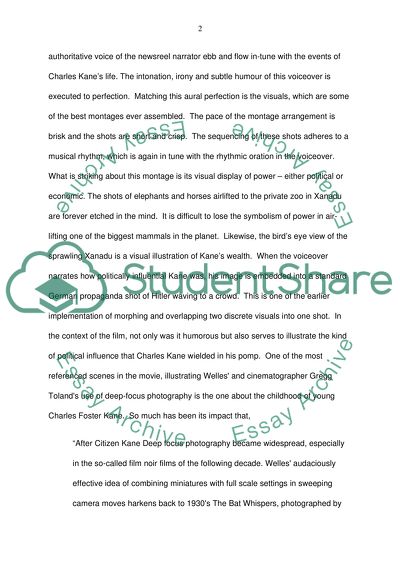Cite this document
(“Citizen Kane ,the mise-en-scene and cinematography Essay”, n.d.)
Retrieved from https://studentshare.org/visual-arts-film-studies/1470404-citizen-kane-the-mise-en-scene-and-cinematography
Retrieved from https://studentshare.org/visual-arts-film-studies/1470404-citizen-kane-the-mise-en-scene-and-cinematography
(Citizen Kane ,the Mise-En-Scene and Cinematography Essay)
https://studentshare.org/visual-arts-film-studies/1470404-citizen-kane-the-mise-en-scene-and-cinematography.
https://studentshare.org/visual-arts-film-studies/1470404-citizen-kane-the-mise-en-scene-and-cinematography.
“Citizen Kane ,the Mise-En-Scene and Cinematography Essay”, n.d. https://studentshare.org/visual-arts-film-studies/1470404-citizen-kane-the-mise-en-scene-and-cinematography.


